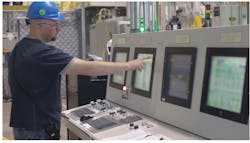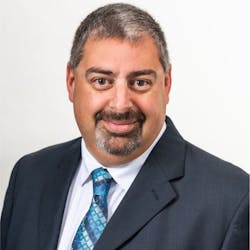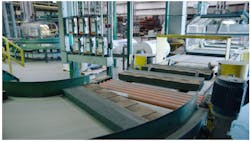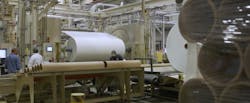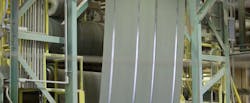GAF Shares its Digital Transformation Lessons
With so much news about the struggles manufacturing companies face in making the digital transformation, the challenges involved may seem insurmountable. Especially when we see statistics indicating that 70+% of digital transformation projects fail. Despite the inherent difficulties, it’s impossible to avoid the need to digitally transform your operations to remain viable in a digital business world.
One of the best descriptions I’ve encountered about the lessons learned during a company’s digital transformation was delivered at the 2023 Industry of Things World event in San Diego by Geoffrey Jackson, senior director of process services and technology at GAF, a manufacturer of roofing and waterproofing materials.
Jackson noted that GAF has made and is still making mistakes during its ongoing digital transformation, but starting with a clear plan, capable of evolution as needed, has been key to its success to date.
The plan
GAF’s Factory of the Future vision was launched in 2017 using Industry 4.0-capable technologies to develop a digital thread via a multi-generational approach. By the end of 2022, with these steps achieved, Jackson said the company’s work is now focused on incorporating these tools into daily operations to visualize and analyze all production-related aspects.
The multi-generational employed at GAF to achieve these goals was described by Jackson as follows:
Gen1—Connect and analyze data and make it available.
- All critical business apps are connected and accessible through a single mobile user interface.
- Routine business tasks are automated and managed by exception in multiple areas.
- Standardize and connect data between plants for analytics and visibility.
- Build a roadmap for skills and competencies evolution.
Gen2—Automate inventory and make its status visible in near real time.
- Make real-time raw material consumption data available in select plants.
- Automate cycle counting at a reduced frequency based on raw material consumption.
- Automate production processes where it makes sense.
- Business roles in moving between systems is automated and managed by exception.
Gen3—Apply machine learning analytics and make the entire process visible to users.
- Fully integrate data to support strategic decision-making.
- Real-time inventory consumption data in all plants.
- Machine automation of routine tasks.
- Use of augmented and virtual reality devices, as well as other electronic resources for troubleshooting, training and other use cases as needed.
GAF’s digital thread
The term “digital thread” has many definitions depending on who’s explaining it, as some like to tie it to specific technologies. GAF’s approach involved first creating product identification methods that could be used to tie together all relevant information about a product.
Following are the four health factors GAF applies to its digital thread:
- Product Health—determined by visual inspections and testing as well as conformance to finished good specifications.
- Process Health—derived from process setpoints and actual values.
- Machine Health—drive and motor conditions, condition-based monitoring, lifecycle management and utility information (e.g., compressed air, cooling).
- Material Health—conformance to raw materials specifications, storage, handling and use, physical properties and receiving information.
“We had all this data before,” Jackson noted, “but it all existed on paper, was filed away and no one looked at it or analyzed it.”
Ring of applications
To put information from these four health areas into the hands of workers and management who need them, GAF focused on deploying what it refers to as a “ring of applications” for creating a world class operation.
The tools comprising GAF’s ring of applications are:
- Computerized maintenance management system (CMMS) for preventative and predictive maintenance
- Warehouse management system (WMS)
- Planning and scheduling system
- Manufacturing execution system (MES)
- Human machine interface (HMI) for production control
- Real-time visual analysis and visualization
The applications in this ring are viewed in terms of people and process tools.
People tools involve skills building and tracking, access to data via a single user interface, dashboards for visualization, human resources-related information, and action and idea tracking.
Process tools include MES, CMMS, WMS, planning, purchasing, HMI, quality assurance systems and data generating tools such quality control systems, raw materials data, machine condition monitoring, environmental health and safety information, knowledge management, financial reporting and shipping.
Applications matching the four health components of GAF’s digital thread are:
- Product Health—quality testing, inventory levels and location, life-cycle management
- Raw material health—incoming quality testing, inventory levels and location
- Process health—planning/scheduling, manufacturing, shipping
- Machine health—condition-based monitoring
A major factor in automating specific tasks revolves around GAF’s focus on eliminating 3D tasks—those deemed to be dull, dirty or dangerous, i.e., the tasks no one really wants to do and don’t create value.
“By automating to eliminate 3D tasks, you remove the creation of handwritten documents and manual spreadsheet creation so that, instead of entering data, users can be looking at it and using it,” said Jackson. “Ultimately, it’s about digitizing information to develop predictive and prescriptive models for better decision making by users to create a more profitable business. Having all these steps connected and understood—knowing the four health statuses, freeing workers from 3D tasks, and using predictive and prescriptive models—helped us sell the value of making these changes.”
7 lessons learned from mistakes
Looking back on the moves GAF has made so far in creating its Factory of Future, Jackson noted seven specific lessons the company has learned:
- Rules before tools. “It’s critical that processes—transactional and physical—are standard, reliable, and meet the needs of business,” said Jackson. “Deploying a tool to get everyone to do things the same way does not work. You wind up over-customizing and making the tool too complex, or the tool isn’t used at all and you wind up with the tool and the old spreadsheet. You have too really know the process you want. It’s about changing how you work.”
- Human and digital infrastructure requirements should be understood and designed to handle future data requirements including headcount to operationalize and analyze. “We deployed some tools that initially went unused because Wi-Fi in the plant wasn’t good enough to use them at the time,” said Jackson.
- Priority conflicts will exist between running the business and technology expansion. Any new tools must be part of running the business.
- Cultural shift to a digital mindset. Change perception from who to go to for information to where data exists and how to use it to solve problems.
- Eliminate the crutch. “There comes a time when old tools and processes need to be turned off to ensure adoption of the new,” advised Jackson. “In some case, we left old tools in place too long. Have a hard date for switchover.”
- Deploy with the right expectations. Users should know if the application being launched will be a minimum viable product (MVP) with rapid iterations expected or a stable application with a longer term roadmap for feature enhancement. “Workers in the plant were expecting to get a fully functional version [of one the tools we deployed], creating problems with acceptance,” Jackson said. “Let them know if what you’re deploying is an MVP to avoid misaligned expectations.
- Have a change management plan that includes services and a feedback mechanism. “Do things like spend a day in the life of the user and don’t just test the best conditions,” advised Jackson. “When feasible, add environments for feature testing and experimentation.”
About the Author
David Greenfield, editor in chief
Editor in Chief

Leaders relevant to this article:
